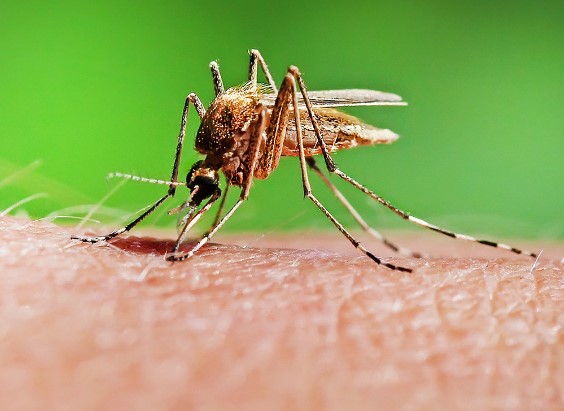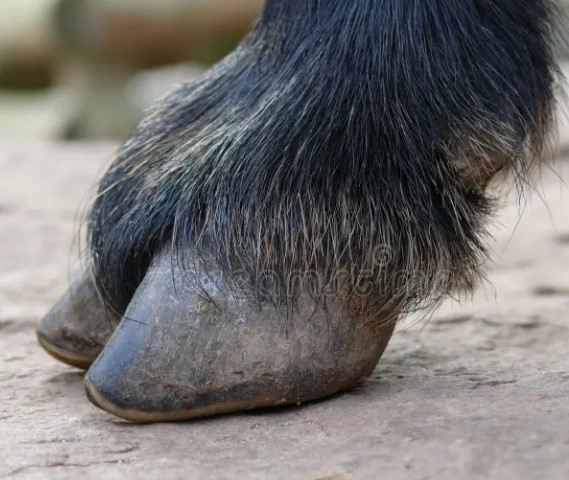Khapra beetle is a dangerous pest of grain crops

The growth of trade between countries brings with it certain phytosanitary threats, including the introduction of dangerous quarantine pests that can adapt to various conditions and cause significant economic losses. Among these threats, the khapra beetle (Trogoderma granarium Ev.) stands out, a quarantine pest significant for many countries. This pest, not found in RUSSIA, poses a serious risk to grain crops and processed products due to its wide range of food and high adaptability.
The khapra beetle originates from India, where it was first noticed in 1894, and was later found in other regions, including the United States , European countries, as well as in the territories of Eurasia, Africa, North and Central America, Oceania and Australia. Its name comes from the Indian "khapra", which translates as "brick" or "wall", this is due to its habit of hiding and gathering in cracks and secluded corners of warehouses and barns. In this regard, the khapra beetle is on the list of quarantine objects in many organizations and countries, including EPPO, OIRSA, CPPC, JUNAC, NAPPOCOSAVE, NAPPO, as well as in Turkey and Belarus.
The pest, recorded in the territory of European countries, including Austria, Germany, France, Italy, Denmark, Great Britain, the Czech Republic, Slovakia, Finland, the Netherlands, and in some CIS countries, for example, in Kazakhstan, Uzbekistan, Tajikistan and Turkmenistan, has shown its unpretentiousness in the choice of food.
- Its diet covers a wide range of agricultural crops, including wheat, rice, barley, oats, corn, as well as their processed products, more than 60 different products in total. In addition, in the absence of standard food, this pest is capable of affecting a variety of materials, from packaging to leather products, including cellophane, polyethylene, polypropylene, polyester and even aluminum foil and kraft paper of various thicknesses, say specialists from the Altai branch of the Federal State Budgetary Institution "Center for Grain Quality Assessment".
It often happens that the khapra beetle ends up in new places, moving with various cargo points, including grain storage facilities, warehouses and production facilities, such as mills and feed mills, not to mention ship holds and railway cars. TheseInsects can accidentally get inside cargo during storage or transportation from places already infested with beetles, for example, through synthetic yarn hidden in bobbins or protected by metal lining of tea boxes. They can also be found in wooden packaging and corrugated cardboard used to pack industrial products. No less common is the import of live larvae along with grain crops and products such as wheat, corn, malt, rice, peanuts and compound feed.
The khapra beetle has a unique appearance. Its body is decorated with hairs that fluctuate in color from yellowish to black, which tend to converge along the central line of the back. The size and color palette of these insects can vary: the length varies from 1.6 to 3.2 mm, and the width - from 0.9 to 1.7 mm. It is noted that females are larger than males, although both sexes share the same elongated oval shape with parallel sides. The light brown elytra hide a dark brown abdomen, and there may also be decorative dark stripes on the body.
- The beetle is equipped with three pairs of legs, and its legs and antennae stand out in yellow. Despite the apparent underdevelopment of the short elytra, thin wings are hidden under them. However, the ability to fly in these insects is limited - they can only jump. It is interesting that, despite the lack of need for food in adults, they still retain a well-developed chewing type of mouth apparatus, - they add in the Altai branch of the Grain Quality Assessment Center.
IMPORTANT! A unique criterion for recognizing a harmful insect is the peculiarity of its jaw: you will see a deep depression in the center. The larvae of this pest are highly viable, can tolerate both extremely high and low temperatures, and are even resistant to chemicals intended to destroy them. In conditions wheresurvival becomes difficult, they can hibernate, hiding in the most inconspicuous secluded places, such as cracks in walls or behind finishing materials, and in this state they can remain for up to four years without movement, food and with minimal breathing.
As for reproduction, the female is capable of laying an impressive number of eggs - up to 130, although the average number is usually about 70. The speed of their development largely depends on the ambient temperature: at 32 ° C, embryos develop from 5 to 16 days.
The khapra beetle larva is the main threat to a variety of plant and animal products. It is especially attracted to various grain crops such as corn, wheat, rice and others, as well as nuts. These beetles also happily feed on the seeds of legumes, vegetables, flowers, ornamental and even forest plants. In conditions of drought and high temperatures, when grain has only 6% moisture, these pests can thrive, since other warehouse insects are unable to survive in such conditions. The khapra beetle reproduces especially successfully in heat from 36 to 40 degrees Celsius, encountering no resistance from other pest species, in a short time increasing its population by several thousand individuals per kilogram of grain, destroying up to a quarter of its mass and primarily affecting the embryos of seeds, which significantly reduces their ability to germinate.
In many cases, damage to up to 70% of stocks of products has been recorded, which leads to their complete unsuitability. Significant contamination of grain crops with larvae makes products dangerous for consumption by both humans and animals, increasing the risk of poisoning. Infected grain used for oil production contributes to its deterioration in quality, giving it an unpleasant taste and high acidity. The viability and rate of reproduction of the khapra beetle depend mainly on the availability of food and temperature conditions. At low temperatures, the pest is capable of producing only one generation per year, while in warm and heated rooms its activity does not cease all year round.
The main routes by which the khapra beetle can spread include the following: first, grain intended for food and feed, as well as its processed products, among which malt stands out. Secondly, the spread of the pest can be caused by seeds sent to agricultural enterprises and various commercial structures. The third aspect covers the transportation of grains, carried out by various modes of transport, including trucks, trains, ships and planes, from regions where this pest is found. Finally, the fourth aspect is associated with containers and packaging, namely bags and boxes used to transport equipment that were stored in infested warehouses before shipment. To prevent the importation and further spread of the khapra beetle, it is necessary to take preventive measures.
To combat the infestation of grain by the khapra beetle, special attention is paid to phytosanitary control of imported grains and their processed products from regions with the risk of infestation. Effective pest control involves a combination of preventive measures, from regularly checking food stocks in warehouses to maintaining a high level of cleanliness in the premises. Various methods, such as aerosol treatment, gas disinfection and wet cleaning, are used to prevent the appearance of pests. The synergy of these measures is most effective in preventing infestation.
To ensure the safety of grain stocks and protection from pests, various methods are used. One such method is heat treatment, where the process of heating the grain to a temperature of over 50 degrees Celsius is followed by its subsequent cooling. In addition, cleaning by separation, carried out by portable grain cleaning units, is used to remove insect remains after cooling the grain.
- Chemical methods are also used in the fight against insect pests. This includes the use of insecticides and fumigation, or disinfection of grain products by exposure to toxic gases, among which phosphine is recommended for getting rid of the khapra beetle. Fumigation can be carried out in various ways: in specialized chambers, during transportation or under the protection of polymer film, - note specialists of the phytosanitary quarantine disinfection department of the Altai branch of the Federal State Budgetary Institution "Grain Quality Assessment Center".
In certain situations, a method is used to combat pests, when the grain is treated by distributing it along a conveyor belt and then irrigating the grain with a water-based insecticide solution.
Source: Press service of the Altai branch of the Federal State Budgetary Institution "Grain Quality Assessment Center"
Read together with it:
- Maduro has given himself new powers in the event of war with the United States.As the Venezuelan Vice President clarified, the decree will come into force in the event of external aggression, which could be based on US military intervention. Venezuelan President Nicolás Maduro signed a decree granting him additional security powers in the event of a military invasion of the country, Venezuelan Vice President Delcy Rodríguez announced, Finanzas Digital reports. She announced ...
- Иран сообщил о предложенной Штатами отсрочке санкций в обмен на уранПезешкиан рассказал, что Тегерану и Вашингтону не удалось достигнуть соглашения по вопросу snapback. По его словам, США предложили Ирану отсрочку в три месяца перед восстановлением санкций при условии передачи стране всего урана Масуд Пезешкиан США были согласны дать Ирану трехмесячную отсрочку перед восстановлением санкций Совета Безопасности (СБ) ООН при условии передачи всей партии обогащенного...
- На Ставрополье собрали более 12 тыс. тонн соиВ регионе активно идет уборка пропашных культур – кукурузы, подсолнечника, сахарной свеклы, а также сои. Аграрии края уже убрали больше половины посевной площади сои. Намолот составил 12,5 тыс. тонн, при средней урожайности 15,1 ц/га. В текущем году сельскохозяйственные товаропроизводители отвели под сою 17,7 тыс. га. Её выращивают в 11 округах края, наибольшие площади сосредоточены в Новоалександ...
- Meat Perspectives: The Convenience of MeatAs the name suggests, these stores were originally designed to offer a limited selection of food, beverages, and household goods in easily accessible locations with extended hours, making shopping easier. While this remains the primary purpose of convenience stores, the variety of products offered, especially ready-to-eat MEAT and poultry products, makes these stores a highly attractive market for...
- Bloomberg назвал условие Индии для отказа от российской нефтиИндийские чиновники заявили Вашингтону, что сокращение импорта российской нефти потребует от США разрешить закупки у находящихся под санкциями поставщиков — Ирана и Венесуэлы. Иначе есть риск роста мировых цен на нефтепродукты Индия готова сократить импорт российской нефти при условии снятия американских санкций с двух других поставщиков — Ирана и Венесуэлы. Об этом индийские чиновники сообщили на...





























































